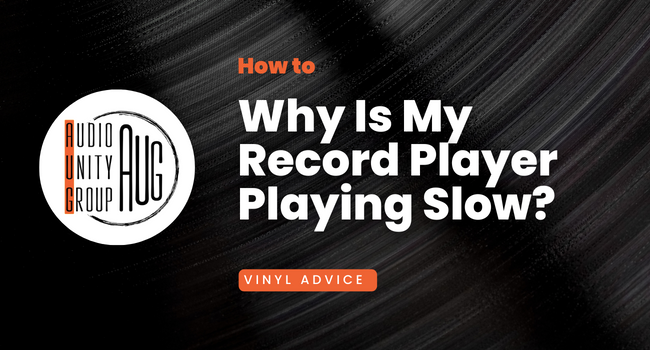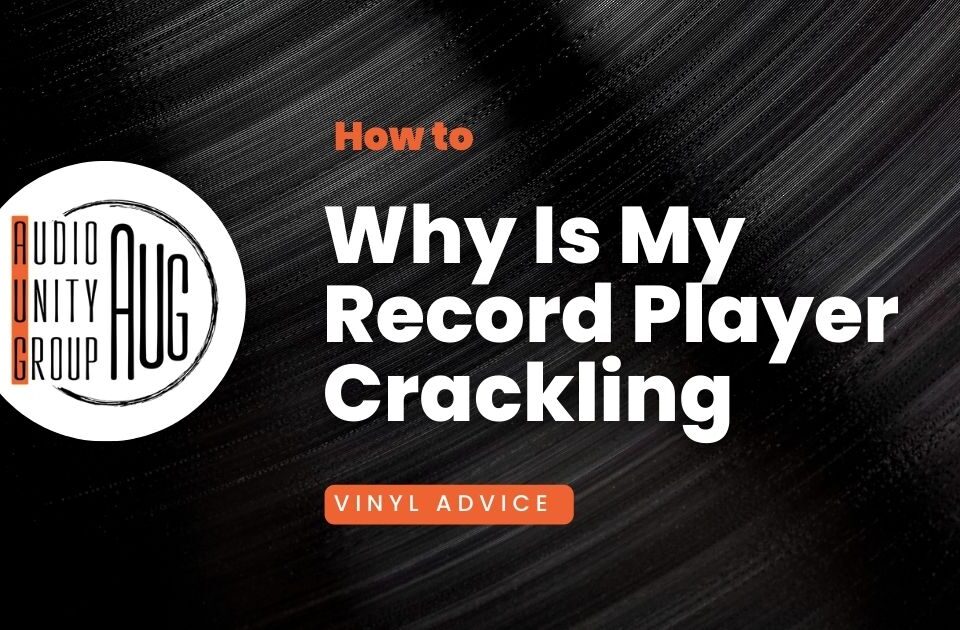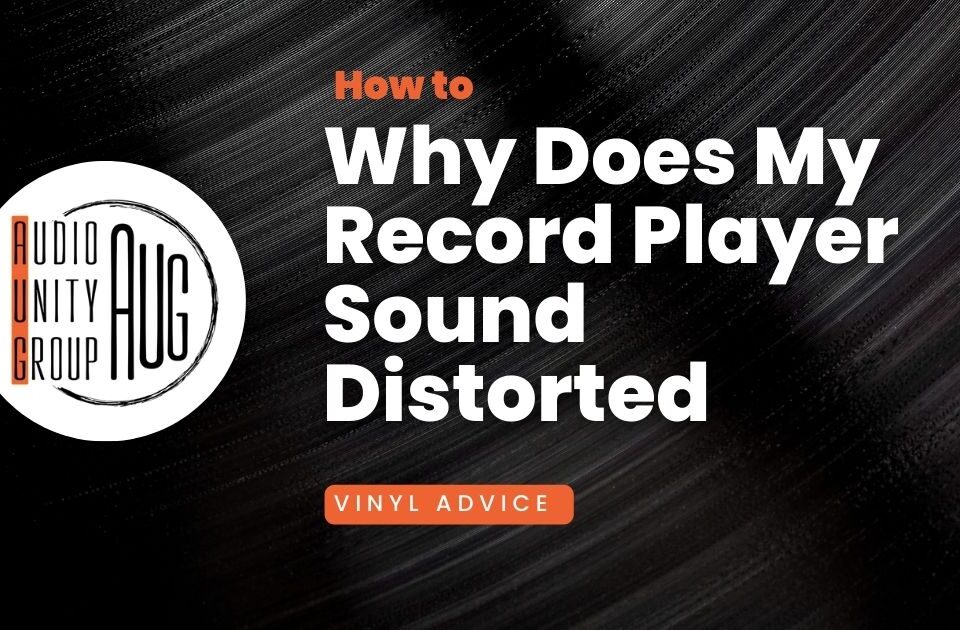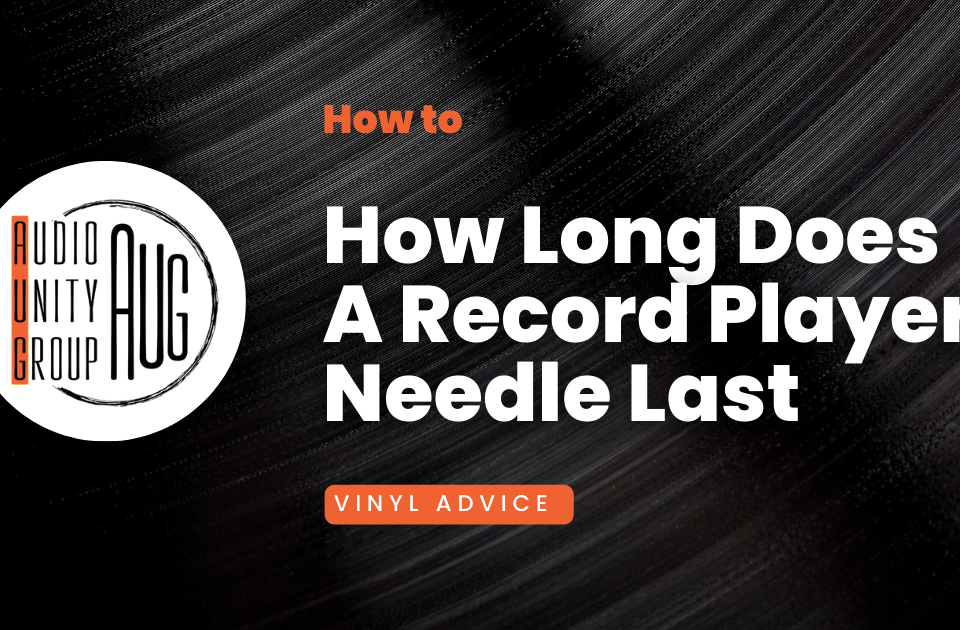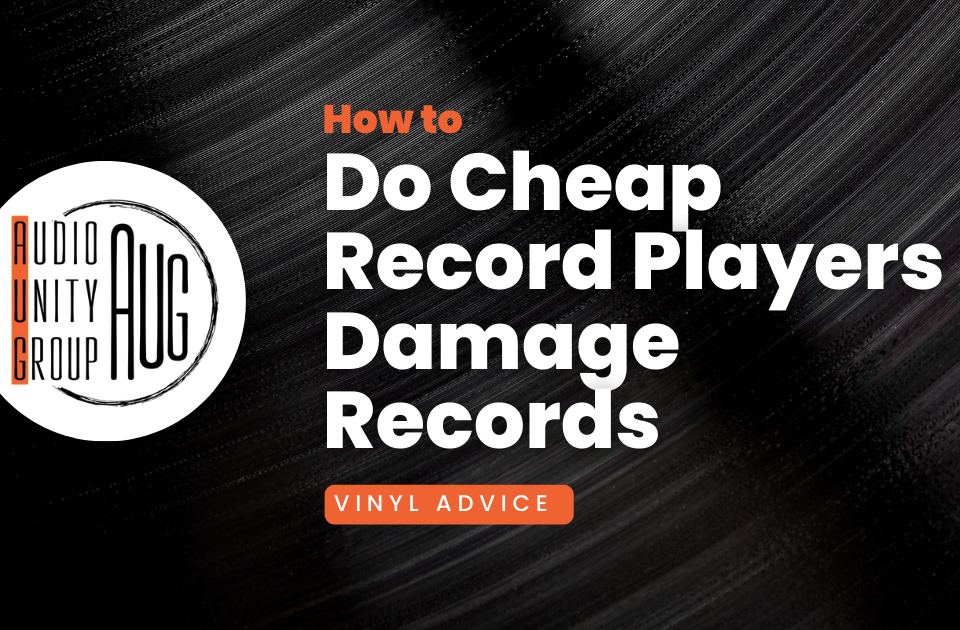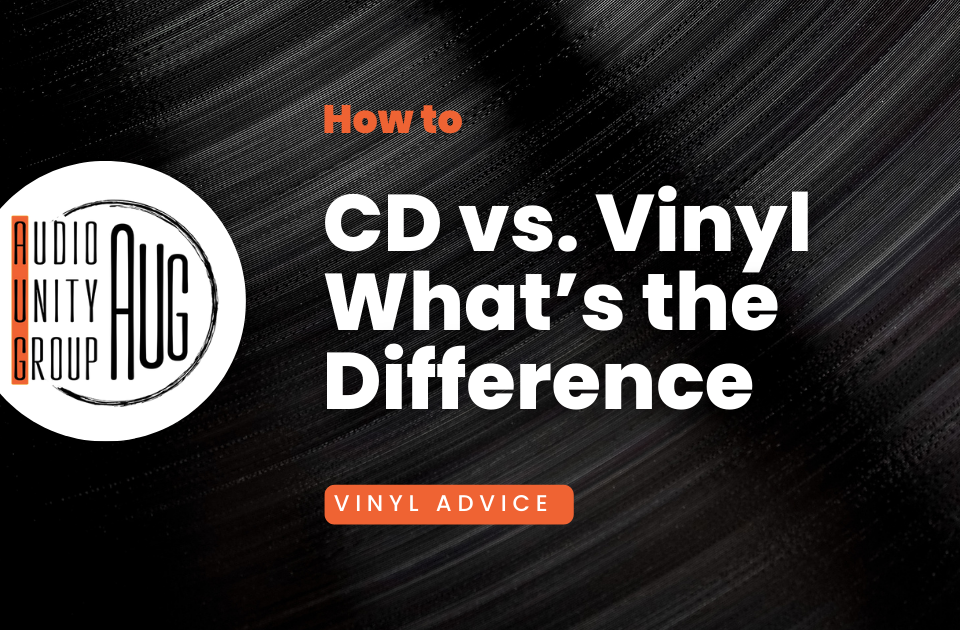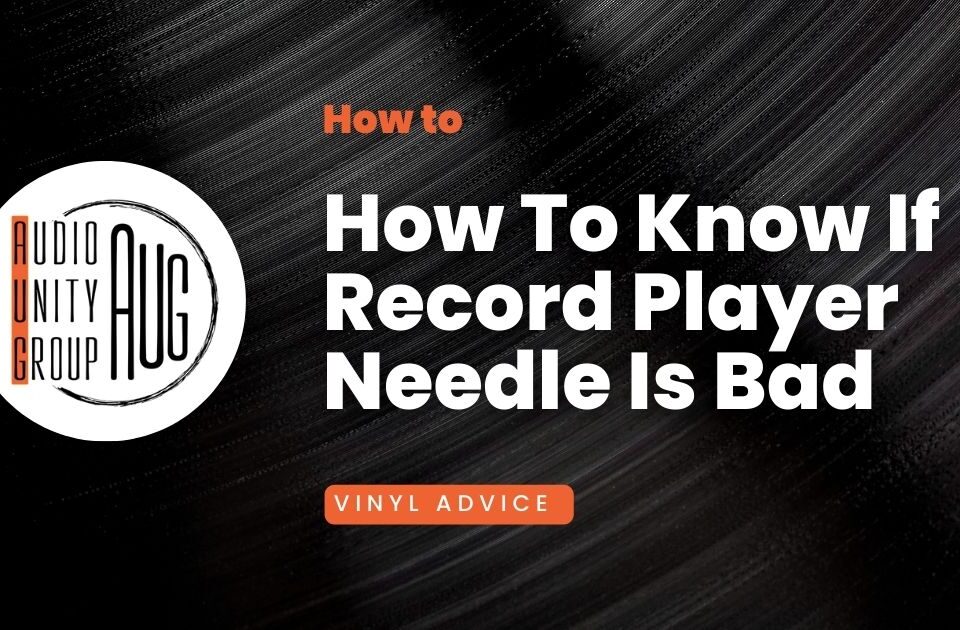
Can You Play 45s On A Regular Record Player
March 22, 2023Best 5 Turntables For Under 300
April 12, 2023Last Updated on April 30, 2023 by Tom S. Ray
Why Is My Record Player Playing Slow? Common Causes And Fixes
There’s nothing quite like the warm, nostalgic sound of your favourite vinyl records. But, have you ever noticed your record player playing a little slow? It can be frustrating and may affect the overall listening experience.
In this blog, we’ll explore common causes for slow playback on turntables and provide effective solutions to get you back to enjoying those timeless tunes at their proper speed. Read on to uncover helpful tips that will ensure your vinyl collection sounds as good as it should!
What Causes A Record Player To Play Slowly?
A record player may play slowly due to a worn or loose belt, buildup of dirt and debris, incorrect turntable settings, motor issues, tonearm troubles or stylus problems.
Worn Or Loose Belt
As a music lover, you’re probably aware of the importance of having a well-functioning record player to fully enjoy your favourite tunes. One common reason for a record player playing slow is a worn or loose belt. The belt connects the motor to the turntable platter, allowing it to spin at the desired speed. Over time and with regular use, belts can lose their elasticity or tension which in turn affects how fast your records play.
Now, imagine inviting some friends over for a vinyl listening party only to find that your classic Beatles album is playing at an unusually slow pace due to this issue – quite disappointing! If you suspect that your record player’s belt might be stretched, take off the platter and inspect its condition closely. Signs of wear can include visible cracks or fraying on the edges. In some cases, repositioning an incorrectly placed belt may help restore proper playback speed; otherwise replacing it altogether would be necessary. Remember that prevention is key—regularly check and replace belts as needed so you don’t miss out on those timeless melodies we all love so much!
Buildup Of Dirt And Debris
A common culprit for a slow-playing record player is the buildup of dirt and debris on the turntable components. Dust, grime, and other particles can accumulate over time, affecting your turntable’s performance and causing your vinyl records to play at an incorrect speed. For example, when dust gathers around the stylus, it may struggle to trace the grooves correctly in the linear cut record groove resulting in slower playback.
Regular cleaning of your turntable and its components should be part of your maintenance routine as a music lover. One area you need to pay close attention to during cleaning is beneath the platter – this often gets neglected but can harbour significant amounts of dust which could affect playback speed. A microfiber cloth or a soft brush can help remove any loose debris on accessible surfaces while rubbing alcohol gently applied with cotton swabs or Q-tips works well for removing stubborn dirt from those hard-to-reach areas.
Don’t forget about your vinyl records too! Keeping them free from dust will not only prolong their lifespan but also ensure that they play at their intended speed with optimal sound quality. Store them vertically to prevent warping or damage and handle them by their edges rather than touching their surfaces where oils from fingertips could cause further contamination. Remember, proper care and maintenance go a long way in preventing issues that lead to slow playback speeds on your beloved record player!
Incorrect Turntable Settings
One possible explanation for slow playback on your record player could be incorrect turntable settings. It is essential to ensure accurate records of the speed selector, typically found on the turntable’s interface or control panel. The most common options are 33 1/3 RPM (Revolutions Per Minute) and 45 RPM; these refer to how many spins per minute a record should make when playing at its intended speed.
For example, if you’re trying to play a standard LP album which uses a rotating speed of 33 1/3 RPM and mistakenly set your turntable to run at 45 RPM, the music will sound too fast. Conversely, having it set too low can lead to that dreaded slow-motion effect during playback. Take some time to familiarise yourself with your specific record player model and always double-check the settings before use.
At times, even with correct manual settings, automatic systems in place may not work as expected due to calibration issues. In such cases, it’s good practice to verify whether there’s any pitch control option available within your particular device configuration. If so, try making slight adjustments until the desired tempo is attained—while keeping an ear out for potential distortion that could arise from excessive tweaking! Remember: regular maintenance such as periodic cleaning and inspection prevents problems like slowed playback from arising over time while enhancing both performance quality and equipment longevity alike!
Motor Issues
Another common cause of a slow record player is motor issues. If your turntable has a belt-driven motor, chances are the belt may have slipped or become worn out over time. This can result in slower playback and poor sound quality. On the other hand, direct-drive motors may also experience slowdowns due to mechanical problems or damaged components.
To fix motor issues with your record player, it’s best to seek professional help if you’re not confident in your technical skills. A qualified technician can diagnose any underlying problems and determine the most effective solution for getting your machine back up to its optimal speed. Depending on the severity of the issue, you may need to replace certain parts or even consider investing in a new turntable altogether.
As with any mechanical device, regular maintenance and care will go a long way towards preventing motor issues from occurring in the first place. Be sure to keep your record player clean and lubricated as needed, handle records carefully when changing them out, and avoid exposing your machine to extreme temperatures or humidity levels that could cause damage over time.
Tonearm Troubles
Another cause of a slow record player is issues with the tonearm. The tonearm holds the stylus responsible for reading grooves in the vinyl and transmitting sound to the speakers. If there are issues with its balance, positioning or even damage to it, playback speed can suffer. An unbalanced tonearm may result in vibrations that affect how swiftly it moves across the record’s surface, leading to slower playback.
To fix this issue, you may need to adjust the counterweight on your turntable tonearm or make sure that any mechanisms holding part of your tonearm in place aren’t stuck due to dirt or wear. It’s also essential to ensure that your cartridge is securely attached as movement here can also affect playback speed.
Regular maintenance such as cleaning and lubricating any moving parts will help prolong the life of your equipment and prevent premature breakdowns that could affect playback quality over time. Remember always to handle records carefully while placing them onto their platter so not damage is done at this stage either!
Stylus Problems
If your record player is playing slowly, it could be due to problems with the stylus. The stylus, also known as the needle, is a critical component that reads the grooves in your vinyl records and translates them into sound. If it’s worn or damaged, it can cause slow playback or even skip tracks altogether.
One way to identify if the problem lies with the stylus is to inspect its tip for any visible damage or wear. A bent or misshapen tip can sometimes be fixed by carefully straightening it out with a pair of tweezers. However, if there are signs of significant wear and tear on the tip, replacing the stylus entirely may be necessary.
It’s essential to use high-quality replacement styli from reputable brands like Audio-Technica or Shure for optimal performance. Avoid using cheap knock-offs that can potentially damage your records and degrade sound quality over time. Regular cleaning of both the stylus and records will also help prevent issues with slow playback caused by dirt buildup.
How To Fix A Slow Record Player
To fix a slow record player, you can replace or tighten the belt, clean and lubricate the turntable, adjust turntable settings, fix motor problems, repair the tonearm, and replace the stylus. Don’t miss out on learning more about preventing slow playback with our helpful tips in section 4.
Replacing Or Tightening The Belt
If your record player is playing slow, the belt may be loose or worn out. Here are some steps to replace or tighten the belt:
1. Turn off and unplug the record player.
2. Remove the platter by gently lifting it off the turntable.
3. Locate the belt underneath the platter and remove it from its pulley system.
4. Measure the length of the old belt and purchase a replacement that matches its size.
5. Place the new belt around the motor spindle and loop it around the turntable’s pulley system.
6. Test that everything is functioning properly by turning on your turntable and playing a record.
Alternatively, if your current belt is still in good condition but just a little loose, you may be able to tighten it instead of replacing it altogether:
1. Remove the platter in the same way as before.
2. Look for a small screw near where the motor meets the turntable assembly.
3. Tighten this screw to increase tension in your belt.
By replacing or tightening your record player’s belt with these simple steps, you can restore its proper speed and get back to enjoying your vinyl collection without any issues.
Cleaning And Lubricating The Turntable
If your record player is playing slow, cleaning and lubricating the turntable may help you fix the issue. Follow these steps to get started:
1. Start by removing the platter: Most turntables come with a removable platter to access the inner workings of the turntable.
2. Clean the platter: Use a microfiber cloth or a soft-bristled brush to remove any dust, debris, or grime from underneath the platter.
3. Clean the spindle: The spindle is usually located in the center of the turntable and can accumulate dirt or debris over time. Use rubbing alcohol and a cotton swab to clean it.
4. Lubricate the spindle: Apply a few drops of oil to lubricate the spindle after cleaning it.
5. Check for other parts that need cleaning: Check if there are any other parts that might need cleaning, such as tonearm bearings or motor housing.
6. Apply lubricant where needed: If you notice any parts causing friction while spinning, apply some lubricant to them.
By following these steps, you can ensure that your turntable is clean and properly lubricated, leading to better performance and less risk of slowdown issues in the future.
Adjusting Turntable Settings
If you’re experiencing slow playback on your record player, another potential cause could be an issue with the turntable settings. Here are some steps you can take to adjust the settings and potentially fix the issue:
1. Check the speed selector: Make sure the speed selector is set to the correct speed for your record. Most records will either play at 33 RPM or 45 RPM, so make sure your turntable is set accordingly.
2. Adjust pitch control: Many turntables have a pitch control that allows you to adjust the speed of playback slightly. If your record is only slightly too slow, adjusting the pitch control may help.
3. Calibrate using a strobe disc: Some turntables come with a strobe disc that can help you calibrate the speed more precisely. Place the disc on the platter and use a light source (such as a smartphone flashlight) to see if the markings on the disc are staying steady.
4. Clean and lubricate moving parts: Dirt or debris on moving parts such as tonearm bearings or motor bearings can affect playback speed. Cleaning these parts with a soft-bristled brush and lubricating them with a drop of oil could improve performance.
Remember to always consult your user manual before attempting any adjustments or repairs on your turntable. Regular maintenance and cleaning can also prevent issues with slow playback in the future.
Fixing Motor Problems
If your record player is playing slow, it could be due to motor issues. Here are some steps you can take to fix the problem:
1. Check the power supply: Make sure the turntable is properly plugged in and that the power source is working correctly.
2. Clean any dirt or debris: Use a soft cloth to clean the motor area, removing any dust or grime that may be affecting its function.
3. Check for loose wires: Ensure all wires are securely connected and that there are no loose connections.
4. Lubricate the motor: Apply a small amount of lubricant to the motor shaft if it appears dry or is making strange noises.
5. Replace damaged parts: If parts of the motor appear damaged, such as the pulley or belt, they may need to be replaced in order for the motor to function properly.
By following these steps, you should be able to fix any issues with your record player’s motor and get back to enjoying your vinyl collection at the right speed. Remember to regularly maintain and clean your record player to prevent future problems.
Repairing The Tonearm
If your record player is playing slow, it could be due to issues with the tonearm. Here are some steps you can take to repair the tonearm:
1. Check for any visible damage or wear and tear on the tonearm itself.
2. Ensure that the counterweight on the tonearm is set correctly to apply the correct amount of pressure on the stylus.
3. Check for any loose connections or wiring in the tonearm assembly.
4. Use a small amount of alcohol or contact cleaner to clean any dirty or corroded connections in the tonearm assembly.
5. Adjust any calibration dials or screws on the tonearm to ensure it is properly aligned with the record groove and playing at the correct speed.
By following these steps, you should be able to repair your slow-playing record player caused by issues with the tonearm assembly. Remember to always handle your turntable gently and keep it well-maintained to prevent future issues from arising.
Replacing The Stylus
If you’re experiencing slow playback on your record player, it may be time to replace the stylus. Here’s how:
1. Identify the type of stylus needed for your turntable: Styluses come in different shapes and sizes, depending on the cartridge used in your turntable. Make sure to get the correct one.
2. Remove the old stylus: Gently lift up the cartridge assembly and use a pair of tweezers to remove the old stylus, taking care not to touch any other parts of the cartridge.
3. Install the new stylus: Align the new stylus with the cartridge and gently press it into place until you hear a click.
4. Set tracking force and anti-skate: Adjust these settings according to your turntable’s manual to ensure proper playback and protect your records.
5. Test playback: Play a record and check if there has been an improvement in sound quality and speed.
Remember, regular maintenance can help prevent issues with slow playback, so make sure to clean your records and turntable regularly as well.
Tips For Preventing Slow Playback
To prevent slow playback in your record player, make sure to regularly maintain and clean it, store and handle records properly, choose the right turntable for your needs, use high-quality components, and keep the turntable level.
Regular Maintenance
To prevent issues with slow playback, regular maintenance is key. Keeping your turntable clean and dust-free can help ensure that it runs smoothly and at the right speed. Use a microfiber cloth to wipe down the surface of the record and remove any dirt or grime that may have accumulated over time.
Additionally, make sure to keep your records stored properly in protective sleeves when not in use. This will help prevent scratches and other damage that can affect their sound quality when played on your record player.
You should also consider having a professional service your turntable every few years to check for any issues with the belt, motor or stylus. Regular servicing will help keep your record player running smoothly for many years to come. Finally, choosing high-quality components like cartridges and needles can also improve sound quality while reducing wear on your records.
Proper Storage And Handling Of Records
As a music lover, I cannot stress enough the importance of proper storage and handling of records. First of all, keep your records away from direct sunlight and heat sources as they can warp the vinyl surface. It’s also crucial to store them in a vertical position so that they won’t bend or crack under their own weight.
Handling your records with care is equally essential – always hold them by the edges rather than touching the grooves or label area to avoid leaving fingerprints or smudges on the record surface. Make sure that you clean your hands before playing any vinyl record to prevent transferring dirt or grease onto it.
Moreover, it’s a good idea to invest in high-quality sleeves for both inner and outer protection. The inner sleeve should be made of anti-static material, while the outer sleeve should be sturdy enough to protect against dust and damage during transport. Remember, with proper storage and handling techniques you can extend the life span of your beloved vinyl collection!
Choosing The Right Turntable For Your Needs
When it comes to buying a turntable, there are several factors to consider. First and foremost, you should think about what you plan on using the turntable for. Are you an audiophile looking for top-quality sound or someone who wants to listen to vinyl as a casual hobby? This will help determine your budget and the features you require.
For those who want top-of-the-line quality, direct drive turntables are recommended due to their superior sound quality and durability. However, these machines can be quite expensive, so if you’re on a tight budget or just starting out in the vinyl world, a belt-drive turntable may be more suitable.
Another important factor when choosing a turntable is connectivity options. If you plan on connecting your record player to external speakers or amplifiers, make sure that it has RCA outputs or USB ports for easy connection.
Ultimately, the right choice of turntable depends on individual needs and preferences. Consider factors such as price range, build quality, features required like manual speed adjustment (important if your records have imperfections), type of tonearm used (straight vs.s-shaped) etc., Do some research beforehand so that you can make an informed decision that suits both your taste in music and budgets while delivering great audio playback every time!
Using High-Quality Components
As a music lover, you want to ensure that your record player is performing at its best. One way to achieve this is by using high-quality components such as cartridges and styluses. These components are responsible for translating the grooves on your records into sound, so it’s essential to choose ones that can accurately track the record grooves and deliver clear audio.
Investing in a good quality cartridge can make a significant difference in sound quality, especially if you have an older or vintage turntable. A high-end cartridge will have better tracking ability, resulting in less distortion and more accurate reproduction of the music. Similarly, using a higher quality stylus can also help reduce wear on your records and provide better frequency response.
In addition to improving sound quality, using high-quality components can also extend the life of your record player. By choosing reliable brands with proven performance history, you’ll avoid issues such as skipping or uneven playback speed caused by substandard parts. Remember that taking care of your equipment ensures it lasts longer and performs better over time!
Keeping The Turntable Level
It’s important to keep your turntable level to prevent issues with slow playback. If the turntable is not level, it can cause the stylus to drag or skip across the record, affecting the sound quality and speed of playback. To ensure that your turntable is level, you can use a spirit level placed on top of the platter. Adjusting the feet at each corner of the turntable can help you achieve a flat surface.
If your turntable is not adjustable, placing shims underneath it may also work. Just be sure to check that all corners are evenly supported and that there is no rocking motion when playing your records. Keeping your turntable level will help you enjoy clear and accurate sound while prolonging its lifespan.
Regular maintenance and cleaning are also essential for keeping your record player in good condition. Use a soft microfiber cloth dampened with rubbing alcohol to clean the surface of the record player regularly. This will remove any dirt, dust or grime build-up that could interfere with playback quality over time.
Other Factors That Can Affect Playback Speed
Factors such as the quality and weight of the record, stylus pressure, and even the size of the turntable can also affect playback speed.
Record Quality
As a music lover, it’s important to understand that record quality can also affect playback speed. Records with manufacturing defects or issues in the recording process may play slower than expected. This is because of imperfections in the grooves and can cause distortion or a muddling of the sound. It’s best to inspect your records for any visible scratches or warps before playing them on your turntable.
Another factor that affects record quality is their size and weight. Smaller records are prone to slower playback due to their smaller circumference, while heavier records require more energy from the motor and can result in sluggish performance. Checking the recommended tracking force range for your stylus when playing different weight categories of vinyl helps ensure optimal sound quality without causing unnecessary wear on your equipment.
In addition, keeping your records clean and free from dust and debris can also improve overall sound quality by reducing friction between the stylus tip and record surface. Regular maintenance such as cleaning with a microfiber cloth or using anti-static solutions before playing can help prevent slow playback caused by these factors. Remember, taking care of your records not only ensures longevity but enhances listening pleasure too!
Record Size And Weight
As a music lover, you may not realize that the size and weight of your vinyl record can affect its speed on your turntable. Records come in different sizes – from 7 inches to 12 inches – and they also vary in weight. If your record player is playing slow, it’s possible that you’re playing an oversized or overweight record.
The circumference of a larger record means it has to spin slower than a smaller one to maintain the same playback time. Meanwhile, heavier records put more pressure on the stylus, which can cause drag and result in fluctuations in speed. So, if you find that all your other records play at normal speeds apart from one particular LP, check its size and weight.
Remember that most turntables have adjustable pitch controls to fine-tune playback speeds for this reason. Check whether yours needs adjusting until the correct speed is achieved for each individual record being played. Regular maintenance such as cleaning your records regularly with an anti-static brush will help ensure better playback regardless of their size or weight.
Stylus Pressure
One of the lesser-known causes of slow playback on a record player could be due to incorrect stylus pressure. Stylus pressure refers to the amount of weight that is placed on the record by the needle when it is playing. If the pressure is too low, then this can cause slow playback or skipping, whilst if it’s too high, you risk damaging your records.
To avoid any issues with stylus pressure, make sure you always read and follow the manufacturer’s instructions for your turntable carefully. Most models will have a recommended range for how much weight should be applied to the records.
If you suspect that your stylus pressure might be off after trying out other solutions such as cleaning and lubrication, one way to test this is through an alignment protractor which helps adjust overhang (the distance between where arm pivots vertically in relation to its horizontal position) and gauge whether angle performance needs adjustments- allowing optimal level surface contact!
When To Seek Professional Help
If you have limited technical knowledge or encounter complicated repairs, it is recommended to seek professional help to avoid any safety concerns.
Complicated Repairs
Sometimes, slow playback issues may require complicated repairs. These could be due to more serious problems such as motor or tonearm issues that require technical expertise to fix. It’s important to note that attempting these repairs by oneself without the proper knowledge and tools could do more harm than good.
In some cases, it might be best to take your record player to a professional repair technician who has experience in repairing turntables. Complicated repairs can include replacing damaged motor parts, fixing wiring connections or even undertaking delicate stylus replacement procedures that need specialist equipment.
It is also essential for music lovers with limited technical knowledge and those concerned about safety issues not attempt these kinds of repairs on their own. However, most turntable-related speed problems can be solved through simple maintenance processes like regular cleaning and lubrication of the turntable components, checking belt elasticity or tension, correctly positioning the stylus head and inspecting any visible physical damages on the vinyl surface.
Limited Technical Knowledge
As a music lover, you might not be well-versed in the technical aspects of record players. It can be challenging to diagnose and fix slow playback issues if you have limited technical knowledge. However, there are some simple steps you can take to troubleshoot before seeking professional help.
Firstly, check if your turntable is level as this could affect the speed. Ensure that it’s placed on a stable surface and adjust its feet if necessary. Secondly, clean the stylus using a soft-bristled brush or microfiber cloth to remove any dust or debris that may cause distortion and affect speed. Lastly, make sure your records are clean and free from scratches or warping that may also cause slow playback.
While these solutions may work for minor issues with slow playback, complicated repairs require more technical expertise. It’s always best to seek professional assistance when dealing with motor-related problems or tonearm adjustments that require precision calibration. Remember regular maintenance such as cleaning and lubricating your turntable can prevent future issues with slow playback caused by dirt buildup or incorrect settings.
Safety Concerns
As someone who loves their music and record player, your safety should always be a top priority. When attempting to fix any issues with your slow-playing turntable or record player, it’s important to take necessary precautions to prevent injury. For instance, before opening up the turntable for inspection or repair, ensure that it is unplugged from its power source. You should also avoid touching any electrical components unless you’re completely sure what you’re doing.
In addition, if you encounter complicated repairs that require more technical knowledge than you possess, don’t hesitate to seek professional help. Attempting a DIY job on something as delicate as a record player can do more harm than good and potentially cause further damage or even harm yourself in the process. Lastly, when handling records or working with the stylus and tonearm of your turntable, always be gentle to avoid scratches and other damage that could impact sound quality over time.
All in All
In conclusion, if you’re experiencing slow playback on your record player, it’s important to first identify the cause of the issue. This could be due to worn or loose belts, buildup of dirt and debris, incorrect turntable settings, motor or tonearm problems, or issues with the stylus.
Fortunately, many fixes are available such as replacing or tightening the belt and cleaning and lubricating the turntable. In some cases where technical knowledge is limited or safety concerns arise pursuing professional help may be necessary. With proper maintenance and handling practices including regular cleaning and storage precautions combined with quality records from reputable manufacturers played on appropriate turntables will ensure an optimal listening experience every time!
Thanks for reading.
Tom
Why is my turntable playing too fast or slow?
A common cause of a record player playing too fast or slow is an incorrect speed setting, belt issues, or the motor not functioning properly. Check the speed switch, belt, motor, and speed calibration to identify and fix the issue.
How do I fix a record player speed issue?
To fix a record player speed issue, first check the speed switch and make sure it is set to the correct speed for the record (33 and 45 rpm are common). Next, clean the motor pulley and replace the turntable belt if necessary. Adjust the speed control or motor speed, and ensure the power supply is accurate (50hz or 60hz).
Why does my turntable spin too fast?
A turntable may spin too fast if it is set to the wrong speed setting, if there’s an issue with the belt or motor, or if the speed calibration needs adjustment. Ensure the correct speed setting is selected, check the belt and motor, and adjust the speed calibration if needed.
Can I adjust my record player speed on my own?
Yes, many record players come with adjustment screws or a speed control that allows you to fine-tune the speed of the turntable. Follow the manufacturer’s guidelines to adjust the speed to the desired setting.
How do I know if my turntable belt is causing the speed issue?
A worn or damaged turntable belt can cause fast or slow playing speeds. If the belt is visibly loose, stretched, or damaged, it might be causing the issue, and you should replace the belt.
How can I check the turntable speed for accuracy?
You can check the turntable speed for accuracy using a strobe disc. Place the strobe disc on the turntable, set the desired speed, and play the turntable. The speed is accurate when the pattern on the strobe disc appears stationary under a 50hz or 60hz light source.
How do I calibrate my turntable playing speed?
Calibrate your turntable playing speed by first placing a strobe disc on the turntable and playing it. Then, locate the adjustment screws or the speed control and make small, clockwise or counter-clockwise adjustments until the pattern on the strobe disc appears stationary under a 50hz or 60hz light source.
What running slow could mean for my Victrola record player?
If your Victrola record player is running slow, it may indicate an issue with the speed control, belt, or motor. Check these components and follow the appropriate steps for cleaning, tightening or replacing them to fix the speed issue.
How do I clean the motor pulley to fix the playing speed?
To clean the motor pulley and fix the playing speed, first unplug the record player and remove the turntable platter. Use a soft cloth or cotton swab gently dipped in rubbing alcohol to clean the motor pulley, removing any dirt or dust build-up. Reassemble the record player and test the speed for accuracy.
Can record collection maintenance affect my record player’s speed?
Yes, dust and debris that accumulate in your record collection can affect the speed of a record player. Regularly clean your records and store them in a dry and cool environment to maintain their quality and avoid speed issues in your turntable or record player.



